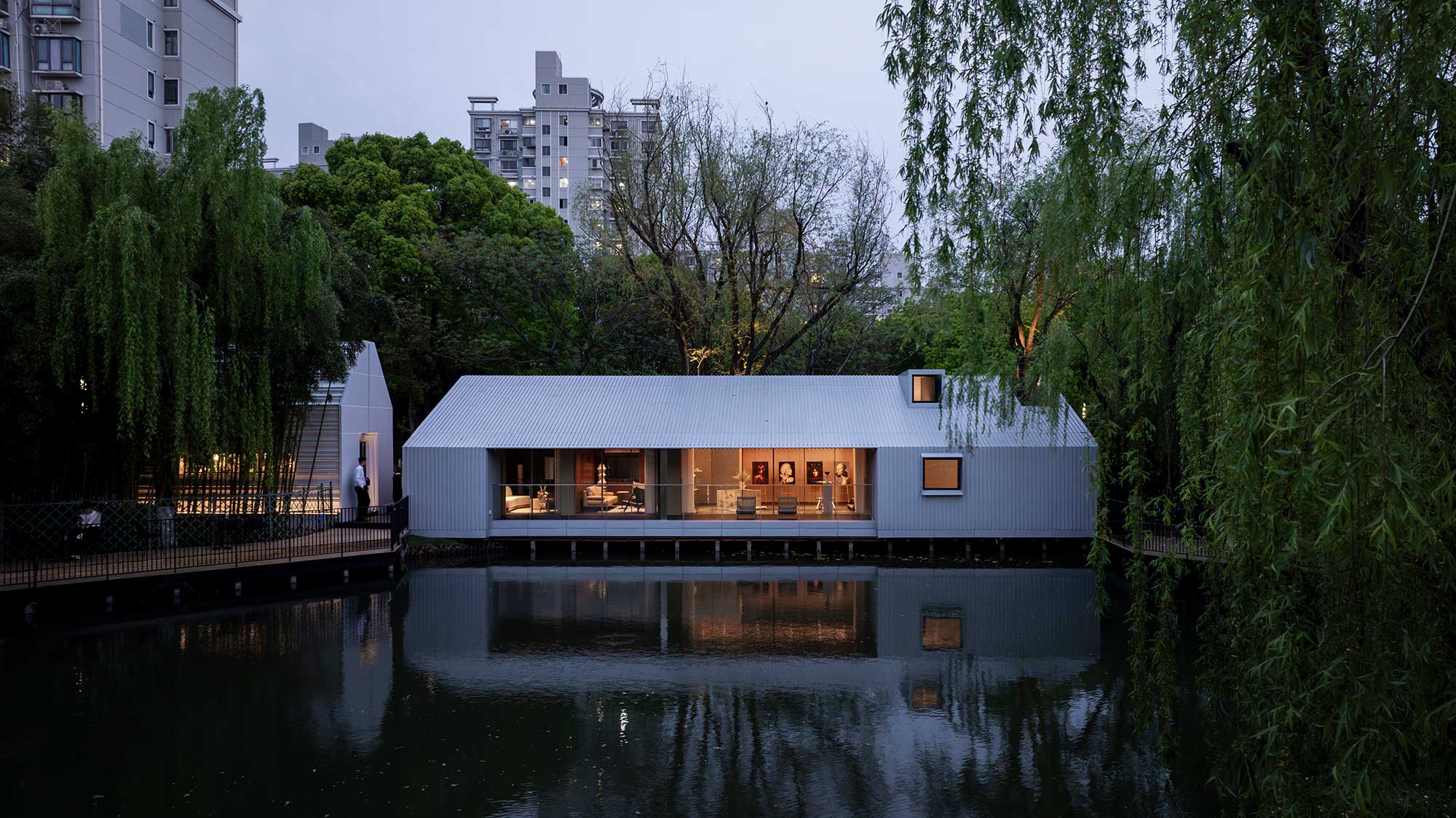WJ Studio Designs a lighthouse hotel reviving the Huanglong Island
A lighthouse retreat balancing cultural memory, ecology, and renewed island vitality.

- Project: Lost Villa. Huanglong Island Lighthouse Hotel
- Location: Zhoushan, Zhejiang Province,
- China
- Architects:
- WJ Studio
- Typology:
- Hospitality Architecture
- Area: 5000m²
- Year: 2025
- Images credit: Tian Fangfang, Zhang Xi
China-based WJ STUDIO began work on a tourism project in Shengsi County a few years ago. Access to the remote island cluster in the Zhoushan archipelago, Huanglong Island is not simple, hours of ferries, roads, and connections from Shanghai, Ningbo, or Hangzhou. This isolation shapes both the island’s charm and its challenge. Unlike destinations built for quick escapes, Huanglong demands time and patience. That tension became the starting point for our design of the Lighthouse Hotel.


Huanglong Island is rich in natural beauty and cultural memory, yet it faces depopulation. Younger generations have left, schools have closed, and only elderly fishermen remain. The project had to answer a difficult question: how do we invite new life back to the island while protecting its fragile culture and landscape?

Concept: Three Dimensions of Time

The design is anchored in the idea of time, the layers of natural, historical, and human presence that shape Huanglong.
Natural Time: The rugged coastline, wind-shaped shrubs, and seasonal fogs give the island its atmosphere. These elements form the genius loci, guiding building placement and orientation.
Historical Time: Stone houses, stepped village paths, and old fishing traditions are embedded in the land. They became our design references, ensuring continuity between past and future.
Human Time: For visitors, architecture becomes a way to experience the island personally—walking, pausing, looking, and inhabiting spaces that reconnect them to place.

Site & Strategy
Dongjutou Village, a rocky headland on the northeast of the island, was chosen as the hotel site. Here, reefs rise up to 30 meters, and stone settlements scatter across the slope. The masterplan unfolds as three hotel clusters: the Lighthouse Hotel on the eastern reef, the Cliffside Hotel, and the Village Hotel. A walking route threads them together, starting from the harbor, weaving through village paths, and climbing toward the lighthouse.

Form & Material
The Lighthouse Hotel is conceived as a series of stepped modules that adapt to the slope. Anchored between three existing reefs, the massing breaks down into volumes that echo the rhythm of the original stone dwellings. The design avoids monumentality; instead, it seeks to blend into terrain and settlement.
Key materials like local stone, yellow brick, rough-textured concrete, and timber, carry forward the spirit of the island’s vernacular. Where possible, the natural reef itself is left exposed, brought into interiors.

The architecture hovers lightly above the rocks, using isolated foundations to minimize impact. This creates a play between the smooth underside of the building and the raw surface of the reef, generating shaded “gray spaces” that become both shelter and landscape.
Spatial Experience

The spatial sequence is designed as a rhythm of hidden, peek, and open. Narrow walkways reveal glimpses of sea and sky, while sudden openings frame wide horizons. Windows are placed to capture shifting sunrises and seasonal winds, making each room an observatory of light and climate.
Block A: A rock hall preserves weathered stone within the building, blurred boundaries between inside and outside. Skylights wash natural rock with sunlight, slowing down perception of time.
Block B: Guestroom volumes recall the scale of village dwellings. Full-height windows frame the sea, while breezes and soundscapes extend the interior into the landscape.
At every scale, from pathways to rooms, the design returns to the human body: pausing at a window, hearing waves, feeling stone, breathing the island air.


The Lighthouse Hotel is more than accommodation; it is a framework for rural revitalization. By weaving natural, historical, and human time into design, the project transforms depopulation from a crisis into an opportunity.

Project Name: Lost Villa. Huanglong Island Lighthouse HotelProject Location: Zhoushan, Zhejiang Province
Completion Year: 2025
Project Type: Hotel
Building Area: 5,000 m²
Client: Zhoushan Shengsi Lost Villa Hotel Management Co., Ltd.
Master Planning & Architectural Design & Interior Conceptual Design: WJ STUDIO
Website: www.wjstudio.cn
Email: brand@wjstudio.cn
Principal Designer: Hu Zhile
Design Team: Jin Yiran, Yang Xi, Liu Yu’ao, Huang Shufei
Constructual Design: Peng Zhu
Water Supply And Drainage Design: Wu Xu
Electrical Design: Fang Weigang
Heating And Ventilation Design: Zhou Jie
Conceptual Planning: Urban Fabric
Interior Design: SZ-Architects
Construction Company: Shanghai Yeyouzhu Decoration Engineering Co., Ltd.
Project Photography: Tian Fangfang, Zhang Xi
Video Shooting: Zhang Xi, STUDIO FANG
Video Editing: Zhang Xi







































